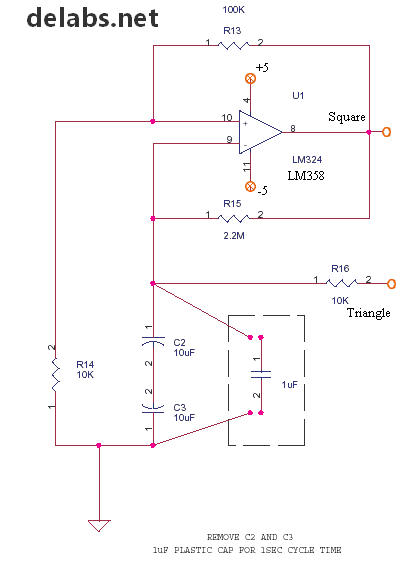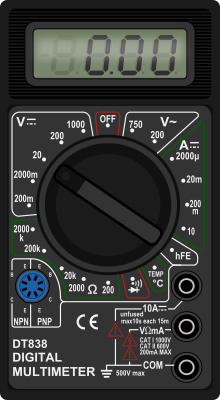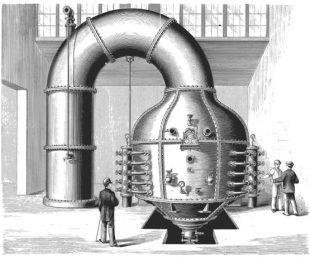Square and Triangle Opamp Oscillator

Here is the circuit of a Op-Amp based Square Wave Generator. One of the main application of this is in a Simple PWM circuit and Triangle Opamp Oscillator. The Slope of the Triangle wave is compared with a DC Level to derive a pulse width or On-Time proportional to a Voltage.
This On-Time proportional to voltage is for a fixed oscillation rate based on C2-C3 and R15. The C2-C3 form a Unpolarized cap, This type is also used in crossover networks in speaker boxes. This is because, a plastic 4.7 uF (2 * 10uF series) is big and costlier, but a plastic cap is very stable and closer to an ideal cap.
First you need to know that most opamps in such circuits can give a square wave, but very few can swing to the rails (+/-5). For designing take 75% of Vcc. CA3130 is one that can swing to rails like a CMOS gate.
Op Amp Triangle-Wave Generator
Assuming the swing of output is around +/- 4V, the pin 10 + input will be at +/- 2V. When the cap is discharged at 0 V, let us take that the output is +, the cap charges to a little above +2, – input becomes dominant, so output swings negative. This discharges the cap to 0 and then charges it negatively upto -2. This in turn flips the output to + as pin 10 turns dominant. Hence this continues as a oscillation, with a nice triangle across the cap for the PWM comparator.
Dominant means more +, 0 is positive compared to -2V. Also -2.5 is negative compared to -2.2.













